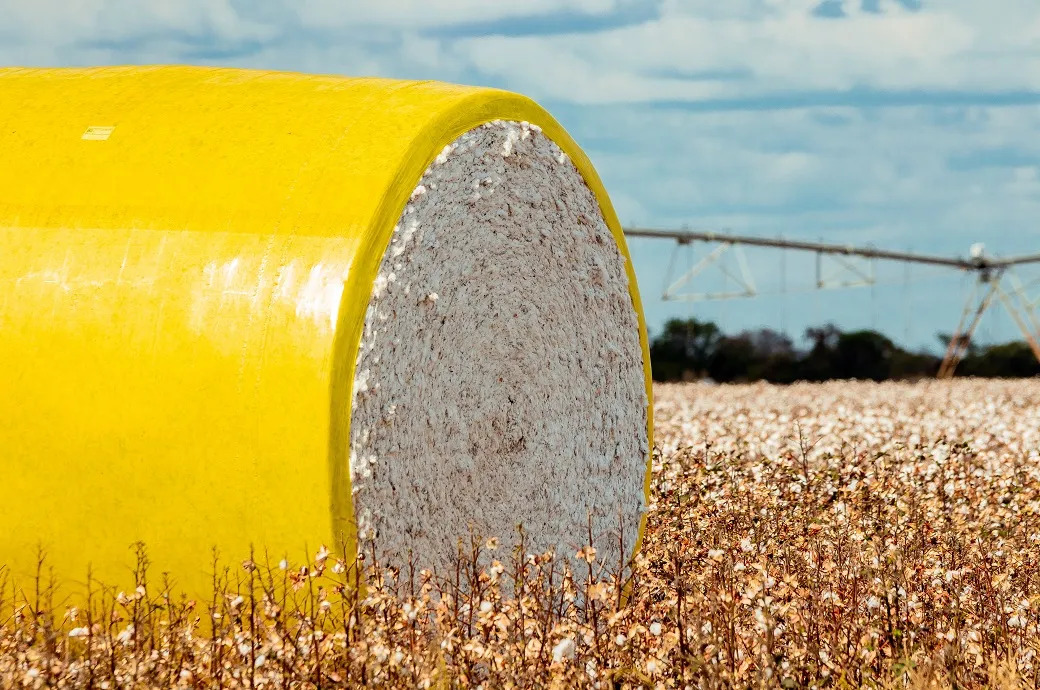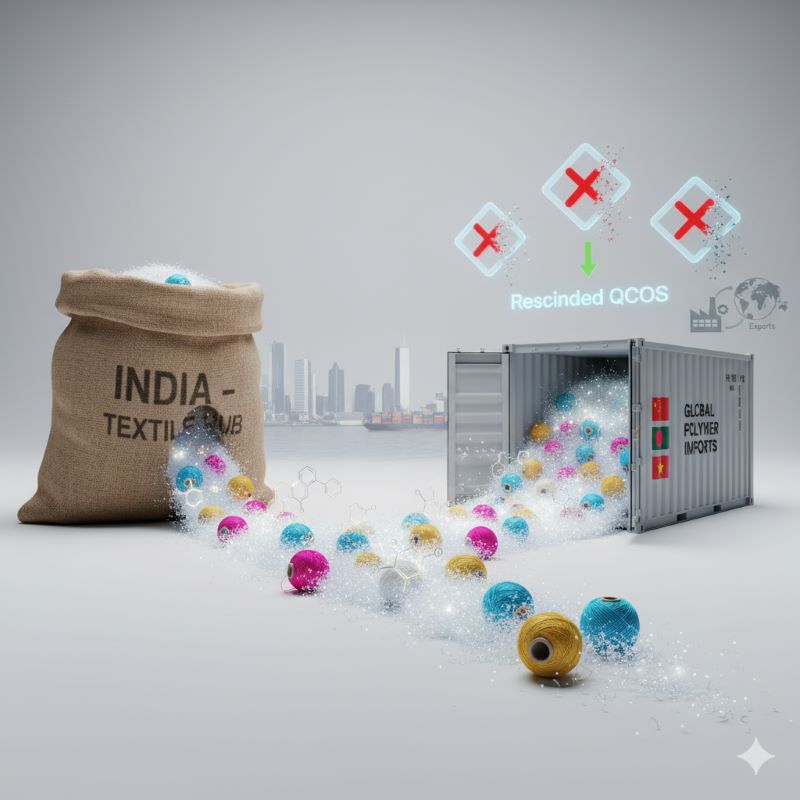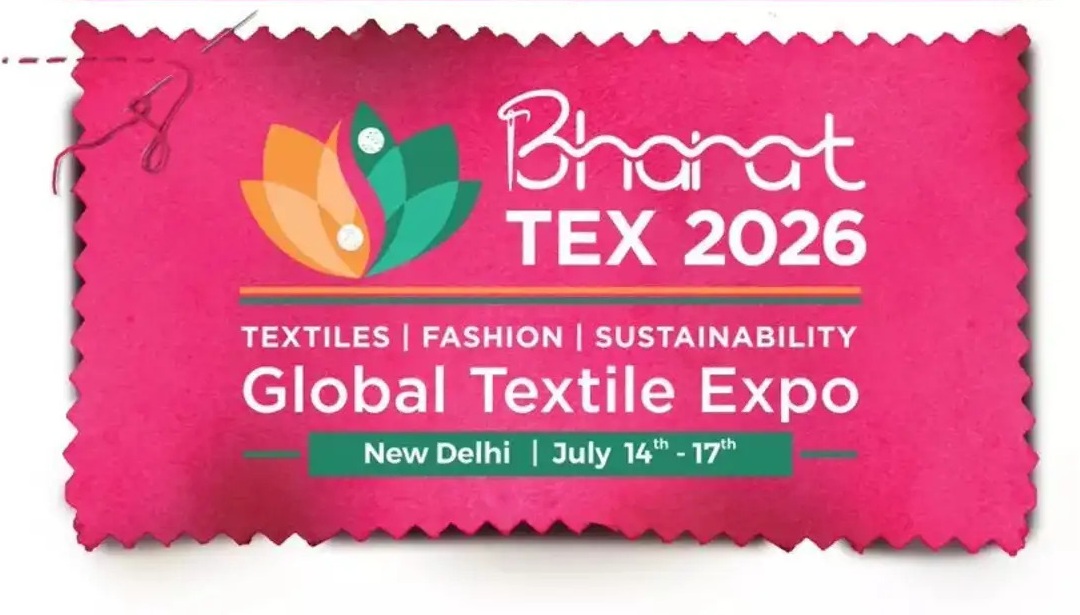FW
Shopholix, India's first fashion and lifestyle couponing platform for brick and mortar stores has raised an impressive sum of Rs 1.5 crore in Pre-Series A round of funding led by veteran investor Munesh Khanna. Shopholix will utilise the funds to enhance the product, strengthen its partner network, and organise overall operations by March 2018.
Founded by Hemant Upadhyay, Abhinav Midha, and Chinmay Bhatt, Shopholix is a location based mobile app and web interface that enables shoppers to locate, explore and plan their shopping trips. The company offers offline retailers a unique opportunity to interact with digital shoppers, and leverage the incoming traffic of users on the platform through coupon redemptions, digital payments, and point of sale systems.
Moreover, the platform seamlessly integrates with any brand's retail CRM to help bring existing customers on board to the Shopholix platform, thus enabling them to experience the next level of retail shopping. Shopholix lets shoppers to discover deals and discounts from around 2,000 local stores, and redeem mCoupons at the retail outlets of popular fashion and lifestyle brands, all on the platform. It has also operations live in Mumbai. The company plans to bring on board 10 lakh total users, and achieve profitability with a valuation of Rs. 100 crores by 2022.
However, it plans to expand its presence across Indian metros and Tier-1 cities, along with major global shopping destinations such as Dubai, Bangkok, Abu Dhabi, Singapore, and Hong Kong.
According to a Singaporean research firm the Cambodian garment and footwear industries need to boost productivity and cut down costs if they are to remain competitive in international markets. Cambodian factory owners should now endeavor to ramp up efficiency at their facilities, with the public sector doing its part in improving logistics infrastructure and reducing the cost of electricity, before the latest wage increase comes into effect according to a report from ASEAN+3 Macroeconomic Research Office (AMRO).
The report further says a new minimum wage for the garment sector will kick in January next year, increasing the minimum salary for workers in the industry from $153 to $170. The new directive makes the minimum wage in the kingdom higher than those of other countries with large garment industries, such as Bangladesh and Myanmar. Kaing Monika, Deputy Secretary-General, Garment Manufacturers Association in Cambodia (GMAC), applauded the report for its accuracy and said they’ve been working for a long time to bolster productivity in the sector.
At present, Cambodia has 520 garment factories and 52 footwear factories which are members of GMAC. According to official data from the General Department of Customs and Excise (GDCE), garment and footwear exports which account for 78 per cent of total exports that increased by 7.2 per cent 2016, reaching $7.3 billion. AMRO forecasts economic growth will remain robust throughout 2017 and 2018, with inflation reaching 3.3 per cent in 2017, up from 3 per cent in 2016, driven by the surging price of crude oil.
The emergence of online fashion retailers have put pressure on traditional, store-based rivals around the world. Asos Plc’s market value surpassed British bellwether Marks & Spencer Group for the first time last month, symbolic of a structural change that has been sweeping through the retail industry for two decades. The growth of discount rivals such as Associated British Foods Primark has only added to the competitive landscape.
Zara owner have fallen 4.5 per cent in 2017, putting them on course for their worst year since 2008. While drop is far less than peers, including H&M AB (down 22 per cent) and Esprit Holdings. (down 35 per cent), it illustrates that even the best in the business are not immune to the challenges of ever-increasing online and discount competition. Renowned for revolutionising the supply chain model for fashion retail, the company has gained a devoted following in the investment community. Raymond James is among 22 brokerages with a buy, outperform or equivalent recommendation on the stock.
According to analysts, as mild European weather delayed purchases of fall/winter garments. Yet they maintain that Inditex has a business model that’s unmatched in the industry. According to Macquarie capital, Inditex’s ability to get products quickly from the catwalk into stores, along with its smaller batch sizes, appeals to a modern consumer who thrives on instant gratification.
According to Inderst, the stock has been hurt by what he calls “short-term concerns” over the impact on profitability of a strong euro and a slowdown in like-for-like performance. Same-store sales growth decelerated to 6 per cent in the six months to July 31, from its strongest in at least 14 years in fiscal 2017. Berenberg’s Michelle Wilson downgraded Inditex to sell last month due to declining confidence in the sustainability of the company’s “exceptional” revenue growth as competition increases.
Such concerns prompted AllianceBernstein’s Phelps to exit his position in Inditex a couple of years ago, having closed his positions in H&M not long before that. He had owned shares in both companies since the mid-1990s, leapfrogging between the two.
"Overriding Italy, Turkey has jumped to second place after China in socks exports globally, accounting for 10 per cent of world exports in 2016. China, the world’s largest socks maker, makes up 40 per cent of the world socks exports, reveals Ozkan Karaca. Though the gap is huge, yet it’s substantial win for Turkish textile industry. With its modern machinery park, and high production and export capacity, Turkey has been inking its name in the global textile market. Istanbul houses around 85 per cent of the factories, it has become an investor’s preferred paradise. "
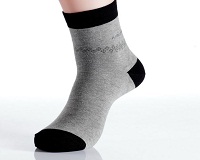
Overriding Italy, Turkey has jumped to second place after China in socks exports globally, accounting for 10 per cent of world exports in 2016. China, the world’s largest socks maker, makes up 40 per cent of the world socks exports, reveals Ozkan Karaca. Though the gap is huge, yet it’s substantial win for Turkish textile industry. With its modern machinery park, and high production and export capacity, Turkey has been inking its name in the global textile market. Istanbul houses around 85 per cent of the factories, it has become an investor’s preferred paradise. There are more than 300 socks factories in Turkey with medium and large-scale production capabilities. In addition, there are many small-scale workshops that manufacture for the internal market.
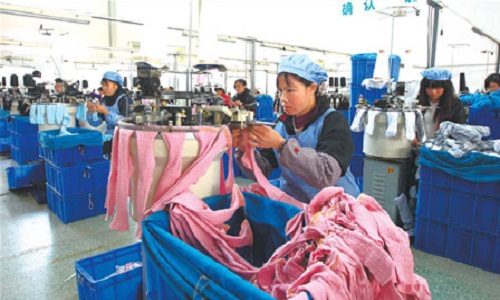
It is estimated that 2.2 billion pairs of socks and 300 million pieces of pantyhose are produced annually in Turkey. Turkey’s largest socks manufacturers in 2016, according to the Industrial Chamber for Istanbul (ISO), included Penti Corap, with net sales of $55 million, Beks Corap, with net sales of $51 million, Altin Iplik Corap, with net sales of $41 million, and Bony Corap, with net sales of $40 million.
Exports on fast forward growth track
Being an export-oriented sector, around 75 per cent of socks produced in the country are being exported. The industry is exporting an average of $86 million worth of socks every month. The EU ranks first in exports, with 85 per cent of socks going to EU countries in 2016. The three largest buyers are UK, Germany and France. According Turkish Statistical Institute, in 2016, Turkey exported 1.5 billion pairs of socks and 146.5 million pieces of pantyhose, worth $1 billion 36 million. Of these socks, 1.2 billion pairs are made of cotton. Between January-October 2017, total socks exports amounted to $862.5 million.
The total socks exports was, $1 billion 36 million in 2016 amounting to $251.6 million. With these exports in 2016, UK is the first with a share of 24.3 per cent in Turkey’s total sock exports. United Kingdom was followed by Germany (21.6 per cent) with exports of $224 million. France (10.7 per cent) was in third place with $110.8 million. The share of these three countries in total sock exports was 56.6 per cent.
Target markets: US and Japan
Turkey is eyeing expansion with the The Socks Committee taking umpteen initiatives. The Committee is preparing projects to increase socks exports within the Istanbul Apparel Exporters Union. Ozkan Karaca, chairperson of this committee says two countries were identified as the target market. The US is the world’s largest importer of socks by importing socks of $2.2 billion annually. Germany is second with $1 billion 20 million imports, and Japan comes third with about $1 billion socks imports. In order to enhance its reach, Turkey has started joining the Las Vegas Magic Show in the US as exporters of socks. It is also attending the Shanghai International Hosiery Purchasing Expo in China, the largest sock supplier in the US. This fair is a good platform where both US buyers, as well as buyers from Japan and Australia attend. Özkan Karaca forecasts by 2020, they aim to export $100 million worth of products to the US market and would like to make Turkey one of the five biggest export destinations.
Competing with China
Turkey and China, which export 85 per cent of their exports to EU countries, are experiencing intense competition in this market. According to Eurostat, the difference between the two countries is $43 million. Özkan Karaca states he was the first in the EU market offering price advantage over Chinese produce And the most important advantage of socks made in Turkey is they are three hours away from the EU and can be delivered in a short time of around three days. The disadvantage is that most of the socks factories operate in Istanbul, where the labour, input and production costs are high. Turkish socks workers should establish factories in Anatolia where government support is at hand and labour and input costs are low.
The textile ministry, in an effort to enhance exports from the country, has designed a new marketing plan that will help various segments in the industry to increase exports. The Ministry will follow a segment wise methodology to cater to the specific needs of countries and has to this effect identified 13 potential markets where it will begin marketing activities to promote Indian products such as handicrafts, jute, cotton, textiles and apparel. Textile exports have been on the downslide post GST, which had significantly reduced import duties which is a bone of contention in the industry. Textile and apparel exports from the country have dipped in recent years due to subdued demand in key importing countries including the US and the EU.
Following this debacle, an Integrated Marketing Plan 2017-18 has been created by the Ministry of Textiles to enhance exports. The country’s total textile and apparel exports for the last fiscal was $ 39.7 billion. The textile ministry has set a target of $45 billion exports for the 2017-18 fiscal. The Integrated Marketing Plan 2017-18 will be launched through promotional activities such as B2B meetings, exhibitions and road shows in countries like Germany, France, Italy, the US, China, Hong Kong, Turkey, Australia, Russia, the UAE, Brazil, Egypt and Chile, as per the requirements of Indian products in these markets.
The Ministry said in a statement, “There exists a huge potential for India to increase its market share in various markets by aligning the product with specific market. In line with this, the Marketing Plan has been prepared to synergise various on-going marketing initiatives while adopting specific approaches for traditional, emerging and other important markets.”
The government is also working towards expediting the delayed India-EU FTA. The textile industry has long since been asking for duty-free access for Indian textile and garment items to the EU following competitive pressures from countries such as Bangladesh, Vietnam and Pakistan.
The US President, Trump, discussed bi-lateral trade relations with leaders of mainland China, Vietnam, the Philippines and other US trade partners, during his two-week trip to Asia but seemed to have made no headway as no specific takeaways were in his basket. Simultaneously, the 11 members of the Trans- Pacific Partnership strove towards modifying and implementing the TPP agreement. While President Trump said at the APEC summit in Vietnam to “Make bi-lateral trade agreements with any Indo-Pacific nation that wants to be our partner and that (they) will abide by the principles of fair and reciprocal trade,” it is doubtful whether his apparent attempt to strengthen US trade and economic relations with Asia, including mainland China, will produce any meaningful results.
The President stressed the importance of ‘rebalancing’ trade relations with China in a way that “strengthens American jobs and exports.” He also called on the Chinese government to guarantee “fair and reciprocal treatment” to US companies, provide greater market access to U.S. exports and firms and speed up implementation of market-oriented reforms to reduce its trade surplus with the US. Trump criticised government intervention in mainland Chinese economy, which he said “has caused stresses in the global trading system,” and stated that the US “will use all available trade remedies to create a level playing field for US workers and businesses.”
The US Commerce Secretary, Wilbur Ross, welcomed the signing of business deals between the US and mainland Chinese companies valued at over $250 billion that are expected to “bring thousands of new jobs to America” by increasing U.S. exports to the mainland and stimulating investment throughout the US.
The World Trade Organization (WTO) and the International Trade Centre (ITC) have launched an on-line platform for market intelligence for cotton products, which will enable cotton producers, traders and policymakers to better harness market opportunities in the sector. The Cotton Portal, revealed at the WTO's 11th Ministerial Conference in Buenos Aires, will contribute to a more efficient cotton trading system by providing improved transparency and accessibility of trade- related information for cotton products and other relevant information for the daily activities of cotton producers, traders and policy makers.
The launch of the Cotton Portal delivers on a key commitment of Nairobi’s decision to identify and examine market access barriers, including tariff and non- tariff barriers for cotton products, particularly those exported by least-developed countries. ITC Executive Director Arancha Gonzalez says that Cotton Portal will enable cotton producers and traders to harvest greater benefits from increased participation in global trade, particularly for least developed countries. By making the sector more transparent, businesses will have easier access to trade and market intelligence, allowing them to add additional value to their exports.
The Cotton Portal is designed for exporters, importers, investors and trade support institutions to search business opportunities and market requirements for cotton products. It provides a single entry point for all cotton-specific information available in WTO and ITC databases on market access, trade statistics, country-specific business contacts and development assistance-related information as well as links to relevant documents, webpages and to other organizations active in the cotton sector.
The 2015 Nairobi ministerial decision on cotton contains provisions on improving market access for least-developed countries, eliminating export subsidies, and the efforts to be made to reform domestic support. It also underlines the importance of effective assistance to support the cotton sector in developing countries.
For decades, donation bins have offered consumers in rich countries a guilt-free way to unload their old clothing. In a virtuous and profitable cycle, a global network of traders would collect these garments, grade them, and transport them around the world to be recycled, worn again, or turned into rags and stuffing. Fashion trends are accelerating, new clothes are becoming as cheap as used ones, and poor countries are turning their backs on the secondhand trade. Without significant changes in the way that clothes are made and marketed, this could add up to an environmental disaster in the making.
Located 55 miles North of Delhi, the dusty city of 450,000 has served as the world's largest recycler of woolen garments for at least two decades, becoming a crucial outlet for the $4 billion used-clothing trade. Panipat's mills specialize in a cloth known as shoddy, made from low-quality yarn recycled from woolen garments. Much of what they produce is used to make cheap blankets for disaster-relief operations.
What's good for Panipat and its customers is bad news for donors and the environment. Even if Panipat were producing shoddy at its peak, it probably couldn't manage the growing flood of used clothing entering the market in search of a second life. The good news is that nobody has a bigger incentive to address this problem than the industry itself. By raising temperatures and intensifying droughts, climate change could substantially reduce cotton yields and thus make garment production less predictable and far more expensive. Industry executives are clearly concerned.
None of these options can replace Panipat and the other mill towns that once transformed rich people's rags into cheap clothes for the poor. But, like it or not, that era is coming to an end. Now the challenge is to stitch together a new set of solutions.
China’s cotton imports are predicted to significantly rise in volume terms this season due largely to the demand for high-quality fibre by their local spinning industry, US officials analysed. The US Department of Agriculture’s (USDA) Beijing bureau assessed China’s cotton imports at 1.30m tonnes (5.97 m bales) in 2017-18, on an August-to- July basis. That would represent an increase of over 2,00,000 tonnes year on year, significantly bigger than the 58,000-tonne increase, to 1.15m tonnes (5.30m bales), that the USDA has officially forecast.
The bureau’s estimate comes despite persistent market rumours that China may be poised for accelerating buy-ins, with some rumours of a potential increase in their import quota of 8,94,000 tonne permitted in with a 1 per cent tariff that is within an agreement with the World Trade Organisation.
The bureau emphasised that since July, anecdotal reports have circulated that the Government might be considering special approval to allow for some imports of high-grade cotton. Given the Chinese textile sector’s increasing demand for high-grade cotton, traders anticipate the government may increase its flexibility in issuing additional import quota.
The Chinese textile sector grew steadily in 2017 and in consideration of all these factors, it is logical for the Government to approve some cotton imports to meet the industry demand in 2018, the bureau said, adding that it remains unclear when the government will allow additional cotton imports.
Latest Chinese cotton import customs data, for October, the month after the closure of the government’s 2017 auction programme of supplies from the country’s cotton stockpiles, came in at 78,128 tonnes, a rise of 89 per cent year on year.
Nandan Denim of the Chiripal Group, is implementing strategic initiatives to enhance its overall profitability and strengthen its global footprint at this opportune moment when China’s textile competitiveness is being downgraded by higher labour costs. During 2016-17, Nandan Denim’s revenue crossed Rs 1,200-crore for the first time. The company is now focusing on growing internationally with the largest denim manufacturing capacity in India. This has only enhanced its prospects from being a peripheral player in the denim segment to becoming a global payer.
The brand has expanded its denim manufacturing capacity from 99 MMPA in FY16 to 110 MMPA in FY17 making it the largest denim manufacturer in India and a leading global manufacturer. It has also expanded its spinning capacity from 70 TPD in FY16 to 141 TPD in FY17. The advanced spinning facility is capable of producing specialised yarns such as dual core, coloured slubs and cotton stretch yarns.
The company has invested in manufacturing competitiveness mainly due to integration of its yarn spinning at one end and denim manufacture at the other. Through the years, it has strengthened its manufacturing integration through various priorities including balancing its manufacturing across both products thus enabling the yarn it manufactured to be consumed in the downstream production of denim resulting in larger value addition; investing in cutting-edge manufacturing technologies from leading suppliers worldwide, which translated into a higher capacity utilisation and lower waste generation; it addressed the manufacture of value-added denim, making it possible to somewhat insulate itself from the competition.


